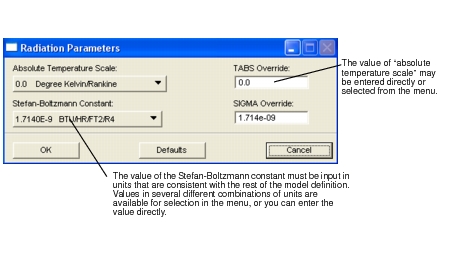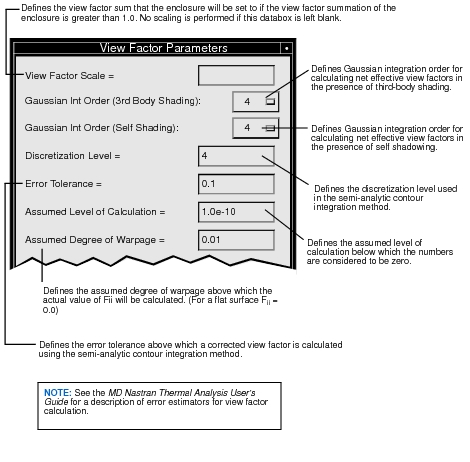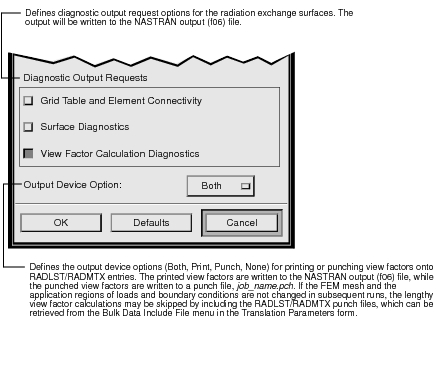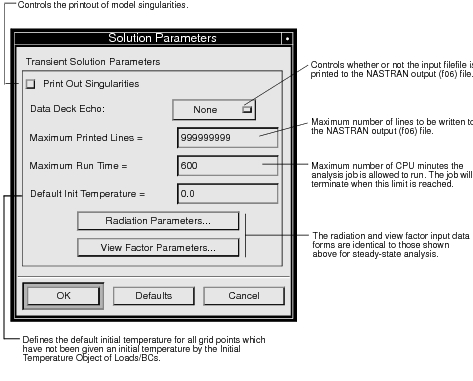XXXXXXXXXXXXXXXXXXXXXXXXXXXXXXXXXXXXXXXXXXXXXXXXXXXXXXXXXXXXXXXXXXXXXXXXXXXXXXXXXXXXXXXXXXXXXXXXXXXXXXXXXXXXXXXXXXXXXXXXXXXXXXXXXXXXXXXXXXXXXXXXXXXXXXXX''"> 4.4 Solution Types
Three solution types are supported in the Patran MD Nastran thermal interface: steady state, transient, and linear structural. The two thermal (only) analysis types employ nonlinear solution algorithms so that nonlinear material properties or boundary conditions can be included in the model. The linear structural analysis type (STRUCTURAL HEAT ANALYSIS) performs first a linear steady-state thermal analysis (SOL 153), then it performs a linear structural analysis (SOL 101) using the results of the thermal analysis as loading on the structural model. Use the form shown below to select the solution type. By default, a steady-state thermal analysis is requested.
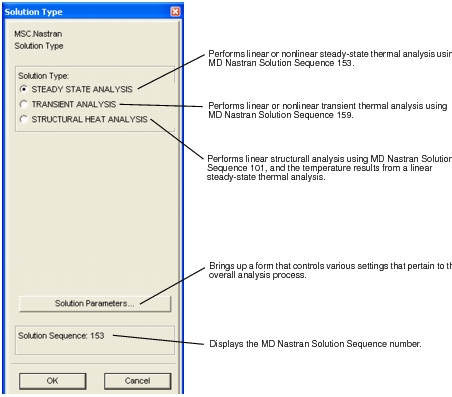
Solution Parameters
The solution parameter form contains options and subordinate forms for defining parameters that affect the overall analysis. The Subcase Parameter forms, described below, are used for setting input data that control the analysis only within a single subcase. You should always review the settings on both forms before submitting an analysis.
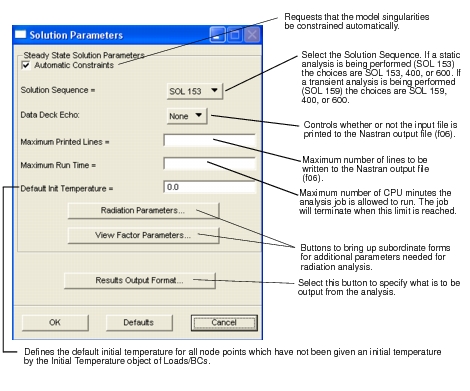
Radiation Parameters
View Factor Parameters
This subordinate form defines parameters and output options to calculate view factors. For all the radiation enclosures selected, the Patran MD Nastran forward translator automatically enables the Gaussian integration view factor calculation method by applying the terminology defined here. A more detailed description of the calculation of view factors can be found in the MD Nastran Thermal Analysis User’s Guide.
Solution Parameters for Transient Analysis



